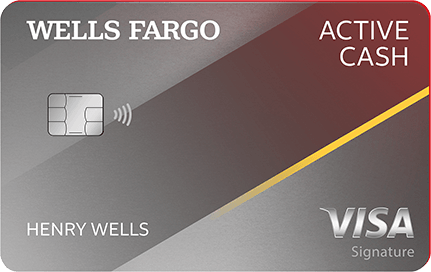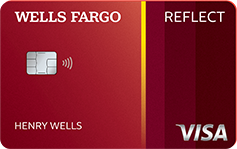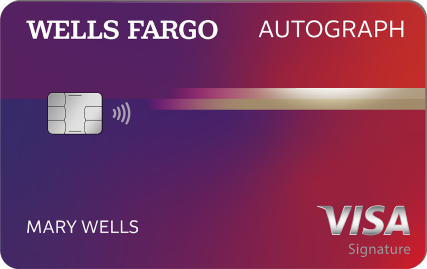
Managing multiple credit
cards for maximum perks
From cash back and rewards to unique perks, credit cards are often more than simply a method of payment. But does that mean you should have multiple credit cards? For some people, having several credit cards provides a wider range of benefits and more opportunities to earn rewards. The key is knowing how to manage them well.
There’s no ideal number of credit cards that everyone should have. For some, it may make sense to have a cash back card, a travel card, and a few co-branded cards tied to their favorite brands. Other consumers may be content with having one or two general rewards cards.
If your goal is to maximize rewards and you’re not overspending, you may find it’s beneficial to open new credit card accounts. Through strategic card usage, you can earn extra rewards in your top spending categories. Generous credit card signup bonuses can also make opening new cards worthwhile. Or you may wish to leverage credit card points and miles strategies to reduce the cost of upcoming trips.
Learn more about the pros and cons of having multiple credit cards and how to manage the cards you have.
Should you have multiple credit cards?

Before opening multiple cards, it’s important to establish responsible financial habits with your first card. From there, you can consider opening new card accounts whenever a specific purpose or benefit arises.
Who may have more than one credit card?
- Established credit users: People who know how credit cards work and have managed theirs well thus far.
- Those with healthy credit: Healthy credit scores can help shoppers qualify for the best credit card offers.
- People who don’t carry high balances: If you’re diligent about paying your bills on time and keeping balances low, you may benefit from having access to more credit.
- Strategic card users: One purpose of having multiple cards is to receive rewards for different categories of spending. This requires you to pay attention to card terms and details to make the most of every purchase.
- Frequent travelers looking for travel perks: Travel credit cards can help consumers earn free flights, free hotel stays, and other travel benefits.
Proceed with caution if you are:
- A new credit user: Many card users find it’s best to start with one card and use it responsibly. As your credit limit increases and your credit score grows, you may decide to add another card to your portfolio.
- Struggling with existing debt: If you have trouble paying off balances, you may make matters worse by opening another account. One exception is that you may find a good balance transfer offer that can help you make progress in paying off your debt, but it requires you to stay disciplined.
- Overwhelmed by managing multiple accounts: If you have missed payments or you don’t review your credit card statements, you make your finances more complex by adding more accounts.
- Applying for a home loan or auto loan in the near future: You may want to avoid any new credit applications right before you apply for a major loan, because lenders may see them as a red flag.
Managing multiple rewards credit cards
Maximizing rewards credit cards takes work, but it can be worth the effort. It requires paying attention to the rewards and benefits your card offers, so you can take advantage of them as much as possible. If you have cards with annual fees, you may also want to crunch the numbers to make sure you’re balancing the cost of the card. The following strategies can help multiple cardholders obtain the most value from their cards.
Space out new credit card applications
Submitting multiple card applications in a short period of time may give the impression that you’re having cash flow problems. In addition, any time there’s a hard inquiry on your credit, it causes your credit score to drop temporarily. Setting a maximum limit of just one or two new cards per year can help keep your credit score healthy.
Keep credit score management in mind
Paying your bills on time and keeping your credit utilization ratio low are two major factors of what makes up your credit score, per Experian. Setting up autopayments for the minimum amount due on all your cards can ensure that you don’t accidentally miss a payment.
Credit utilization is how high your balances are relative to your available credit. A healthy credit utilization score is below 30%, or as close to zero as possible. For example, if your credit limit is $10,000, you would keep the balance at $3,000 or less.
Strategic card usage is key
Consider which credit card will provide the most value every time you make a purchase. For example, you may do all your grocery spending on a card with supermarkets as its main bonus category, book all of your travel on a general travel rewards card, and then use a flat-rate 2% cash back card for any non-bonus category purchases. When applying for new cards, keep in mind that credit card signup bonuses usually have a minimum spending requirement, so you may need to shift some spending to that particular card until you qualify.
Know your credit card benefits
Rewards credit cards can have a variety of consumer and travel benefits, and it can help to know what each card provides. For example, if you have a card that offers cell phone protection, you may want to pay your cell phone bill with that card. Or if you’re going on a trip abroad, consider bringing a card that has no foreign transaction fees.
Regularly review your credit card’s mobile apps and online portals
Rewards credit cards sometimes have pop-up offers, such as statement credits if you spend a certain amount with a particular retailer or service provider. In addition, rewards programs can change over time. Keeping tabs on your card’s terms and conditions can help ensure that you’re maximizing card perks, and that you’re using your card’s best offers.
Evaluate your cards once a year
As your spending habits and financial goals change over time, some credit cards may not be as valuable to you as they once were. For example, if you find you travel a lot less than you used to, you may decide to close or reduce how much you use your annual fee hotel credit card. Or you may realize that your level of spending in a particular category, such as dining, warrants looking for a card with high bonus points for restaurant spending.
If you do decide to close a card account, remember that doing so may hurt your credit score. This is because you will reduce your overall balance across all of your credit lines, which may impact your credit utilization ratio.

Rewards credit cards and how they work

Credit cards that offer reward programs are designed to incentivize cardholders to make purchases using the card. Incentives may take the form of cash back, travel rewards, or points/miles to be redeemed in various ways.
The way this works is that every time you make an eligible purchase, you will earn rewards. The rewards rate will vary depending on the card and the purchase category. Some credit cards earn a “flat rate,” meaning all purchases earn the same amount (such as 1.5% cash back or 2 points per dollar spent).
Other cards have tiered earnings, so some spending categories have bonus rewards. An example is that a card may earn 3 points per dollar spent on dining, 2 points per dollar spent on groceries, and 1 point per dollar spent on everything else. There are also credit cards with rotating category bonuses that change every quarter.
Many rewards cards have a signup bonus or welcome offer that awards a large number of points or bonus cash back if you meet a minimum spending requirement within a certain period of time. For instance, you may earn 60,000 points if you spend $3,000 within the first three months of opening the account.
There are also different levels of rewards credit cards: no annual fee cards, mid-tier cards that charge an annual fee of around $100, and premium cards that have fees of $300 and up. Cards with fees typically have higher rewards rates and a larger suite of benefits.
Cash back credit cards
One popular type of rewards credit card is a cash back card. The main advantage of cash back cards is their simplicity. You get a percentage back of everything you spend on purchases. For instance, if a card earns a flat 2% cash back and you spend $500, you will get $10 in rewards.
Some cash back cards also offer bonus rewards for “everyday spending” categories like gas, groceries, and restaurants, while others may have rotating bonus categories.
In most cases, cardholders can redeem accumulated cash back for a statement credit or request a check payment. Some cash back cards may also let you redeem for gift cards, merchandise, or other options.
Travel rewards credit cards
Travel rewards credit cards help cardholders lower their travel expenses. With the rewards you earn, you may be able to book travel such as flights, hotel bookings, or car rentals. Some cards allow you to redeem earnings for a statement credit toward past travel expenses.
There are two main types of travel rewards credit cards: General travel cards and co-branded travel cards that are tied to a specific airline or hotel chain.
General travel rewards credit cards
With general travel rewards cards, you’ll usually have some flexibility with your redemption options. You could book flights, hotel stays, or car rentals using your rewards. On some cards, you can redeem rewards for recent travel purchases for a statement credit, or you might be able to transfer points to an airline or hotel loyalty program.
Co-branded credit cards
Co-branded cards help cardholders earn points or miles that connect to an airline, hotel, or cruise line loyalty program. In addition to earning rewards, these cards typically offer benefits related to the brand. For instance, an airline card might give you priority boarding or a free checked bag, while a hotel card might give you access to property perks.

Summary
Consumers who practice responsible credit card management and leverage each card’s unique perks and rewards may benefit from having multiple cards.
When selecting new credit cards, consider comparing the different rewards programs. Also, look for benefits that you’re not already getting. For example, if you recently switched to online grocery shopping, you may want to find a card that offers bonus rewards for using third-party shopping apps. Or, if you want to take a trip later in the year, and you don’t already have an airline or hotel card, you may want to consider opening one of these cards to earn the sign-up bonus. The bonus may be enough to earn you a flight or hotel stay.
To successfully juggle several cards, it’s important to follow basic credit card management including making payments on time and maintaining a credit utilization ratio of 30 percent or less.
Educational Disclosure: The editorial material on this page is not intended to provide legal, financial, investment, or tax advice. The products or services described may not be appropriate for everyone. For specific recommendations, consider speaking with the appropriate professionals. Wells Fargo is not responsible for and does not endorse any third-party product, service, or recommendation listed in the article above.






